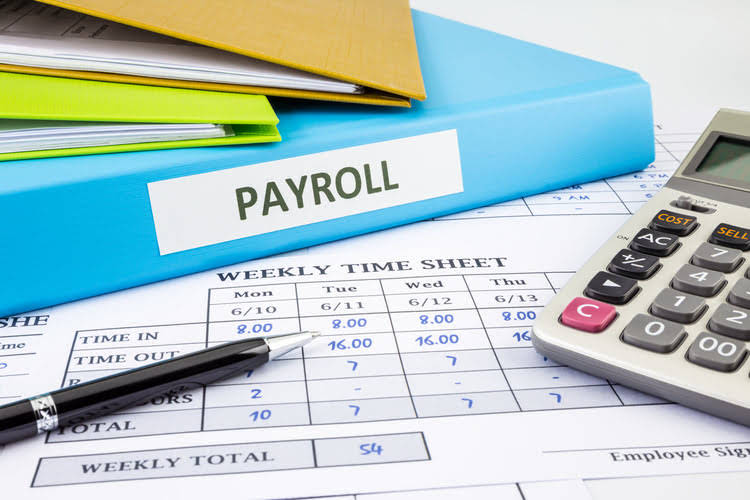Auditing Model Risk Management
Content

You see the thief fleeing away, but you don’t know how much you’ve lost. Audit risk is, and will continue to be, an important element of the Paper F8 syllabus. Candidates must understand the syllabus outcomes, understand what the question requirements involve and practise risk questions prior to the exam.

When there are significant control failures, a client is more likely to experience undocumented asset losses, which means that its financial statements may reveal a profit when there is actually a loss. In this situation, the auditor cannot rely on the client’s control system when devising an audit plan. Audit failure occurs when an audit firm issues an unmodified opinion and the financial statements are not fairly stated. Auditor’s responses should focus on how the team will obtain evidence to reduce the risks identified to an acceptable level. Their objective is confirming whether the financial statement assertions have been adhered to, and whether the financial statements are true and fair. The extent and nature of audit procedures is determined by the level of detection risk required to bring audit risk to an acceptable level.
Achieving Rock-Solid Results in Internal Audit: The Power of Maturity Levels
Detection risk is the risk that the audit procedures used are not capable of detecting a material misstatement. This is especially likely when there are several misstatements that are individually immaterial, but which are material when aggregated. The outcome is that the auditor would conclude that there is no material misstatement of the financial statements when such an error actually exists. Increasing the quantity and especially the quality of audit procedures will reduce detection risk. If internal controls are designed appropriately and work correctly, the financial statements should be materially correct. But if the internal controls are absent or ineffective, material misstatements can occur.
By understanding and evaluating each component, auditors can effectively plan their audit procedures to reduce overall audit risk to an acceptably low level. Audit risk is the audit risk model formula result of the product of inherent risk, control risk, and detection risk. The audit firm issues an unmodified opinion but the financial statements are not fairly stated.
What are some limitations of the audit risk model?
Steven’s roles in banking have included divisional responsibilities for Sustainable Finance, Chair of the Reputational Risk Committee, SME for evolving Markets & Investment Banking target operating model, and Member of the Climate Executive Steering Group. Immediately prior to joining Deloitte, Steven worked for the Sustainable Markets Initiative, where he was responsible for several initiatives announced and launched at COP26. Inherent risk is what a transaction is (independent of related controls). From Question 3b June 2011, in relation to the risk of valuation of receivables, as Donald Co had a number of receivables who were struggling to pay, many candidates suggested that management needed to chase these outstanding customers. This is not a response that the auditor would adopt, as they would be focused on testing valuation through after date cash receipts or reviewing the aged receivables ledger.
- If auditors believe that the client’s internal control can reduce the risk of material misstatement, they will assess the control risk as low and perform the test of controls to obtain evidence to support their assessment.
- The first audit assignment is also inherently risky as the firm has relatively less understanding of the entity and its environment at this stage.
- Detection risk is considered as a residual risk that is set after deciding the level of inherent and control risk with regard to audit procedure and the total risk level that the auditor or audit firm is able to accept.
- Her focus is on physical climate risk and challenging financial service firms in meeting regulatory expectations for climate scenario analysis and modelling.
- Auditor has a responsibility to perform risk assessment at the planning stage of the audit.
- To optimize audit efficiency, auditors can perform fewer substantive procedures, reducing the detection risk without compromising the overall audit quality.
They can however balance these risks by determining a suitable detection risk to keep the overall audit risk in check. Audit risk always exists regardless of how well auditors planned and performed their audit tasks. However, auditors can reduce the level of risk, e.g. by increasing the number of audit procedures. Additionally, audit risk will be low if the audit is well planned and carefully performed. Auditors decrease detection risk—the risk that material misstatements will not be detected—by appropriately planning and performing their work.
AccountingTools
Imagine that a financial consulting firm has an acceptable audit risk of 5%. An auditing team has determined that the level of inherent risk is 90%, while the control risk is assessed to be 40%. Organizations must have adequate internal controls in place to prevent and detect instances of fraud and error.
The three types of audit risk included in the equation are expanded upon below. Deloitte LLP is the United Kingdom affiliate of Deloitte NSE LLP, a member firm of Deloitte Touche Tohmatsu Limited, a UK private company limited by guarantee (“DTTL”). DTTL and each of its member firms are legally separate and independent entities. Please see About Deloitte to learn more about our global network of member firms.
In addition, he consults with other CPA firms, assisting them with auditing and accounting issues. Each scenario will have a variety of audit risks and candidates should, as part of their planning, aim to identify as many as possible. They should then decide which of the identified risks they will explain/describe in their answer.

If the client shows a high detection risk, the auditor will likely be able to detect any material errors. As the the risk of material misstatement (the company’s risk) increases, so should the auditors work. Proper audit work decreases detection risk (the risk that the auditor will not detect material misstatements). Identifying and assessing audit risk is a key part of the audit process, and ISA 315, Identifying and Assessing the Risks of Material Misstatement Through Understanding the Entity and Its Environment, gives extensive guidance to auditors about audit risk assessment. The purpose of this article is to give summary guidance to FAU, AA and AAA students about the concept of audit risk.
The second is detection risk, which is the risk that the audit procedures used are not capable of detecting a material misstatement. The third is inherent risk, which is the risk that a client’s financial statements are susceptible to material misstatements. The audit risk model is the framework used by audit firms to manage different types of audit risk.